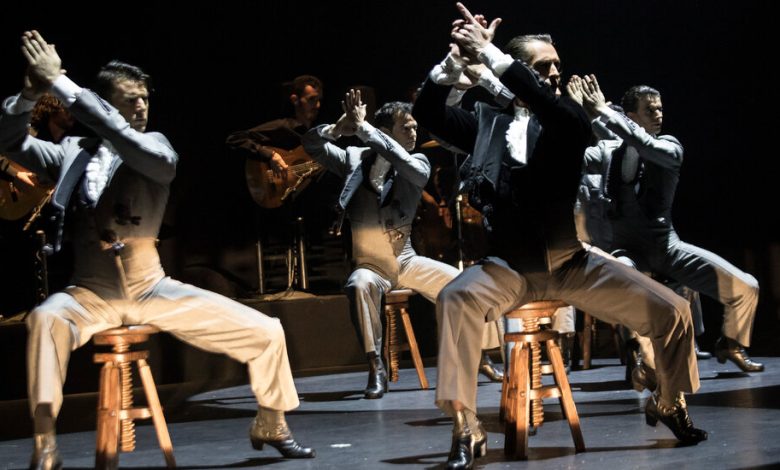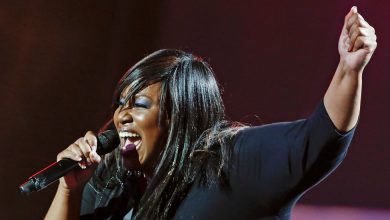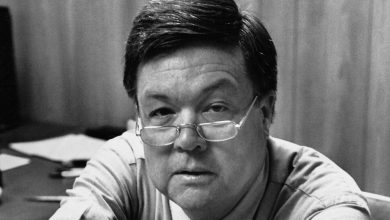On the Menu at Flamenco Fest, Tradition With a Side of Nuttiness

The flamenco dancer Olga Pericet began topless, curled up on the floor like a beached mermaid or a woman recovering from a night of carousing. Her face was covered by a tightfitting mask with painted-on doll features. Later, she danced with a yellow raincoat over her head. She also stood on a bench in a pink wedding cake of a dress, with guitar-shaped cutouts festooning her arms, posing like a surrealist’s conception of a religious icon.
Her show, “La Leona,” was as far out as this year’s Flamenco Festival at New York City Center got. And still, it was rooted in the integrity of tradition. The heart of flamenco lies in the impassioned individual statement in a communal context, a musical conversation. So what might seem like improvements or expansions — elaborate group choreography, imaginative conceits — risk straying from the emotional core that makes flamenco flamenco. This year’s festival showed the risks and the rewards. If the intensity of the dance selections was lower than in some previous editions, the range was wider.
The festival didn’t even start with flamenco. Instead, the Ballet Nacional de España began its program on March 8 with “Invocación Bolera,” a modern evocation of the 18th-century escuela bolero, which is essentially Baroque ballet with Spanish poses and castanets.
This was a welcome switch, and “Invocación” had its charms, showing off a well-trained and large company. Eighteen dancers in period attire filled the stage, their castanets adding a chattering commentary to neat ballet jumps and turns, making them buzz. The choreography — by Rubén Olmo, the group’s artistic director — arranged the groupings adroitly.
A similar professionalism marked “Eterna Iberia,” by Antonio Najarro, though here the style was 20th-century theatricalized flamenco. Percussive footwork was multiplied in tight unison, groups moved in handsome lines and circles, castanets trilled and soloists broke out in displays of expertise.
Olmo’s “Jauleña,” a shape-shifting solo beautifully danced by Inmaculada Salomón, was more contemporary, mixing in modern-dance angularity. But the biggest difference between all this and Ballet Nacional’s final selection, “De Lo Flamenco,” was musical: a switch to live flamenco musicians from recorded orchestral compositions. At the Sunday matinee I attended, this change at least doubled the energy.




